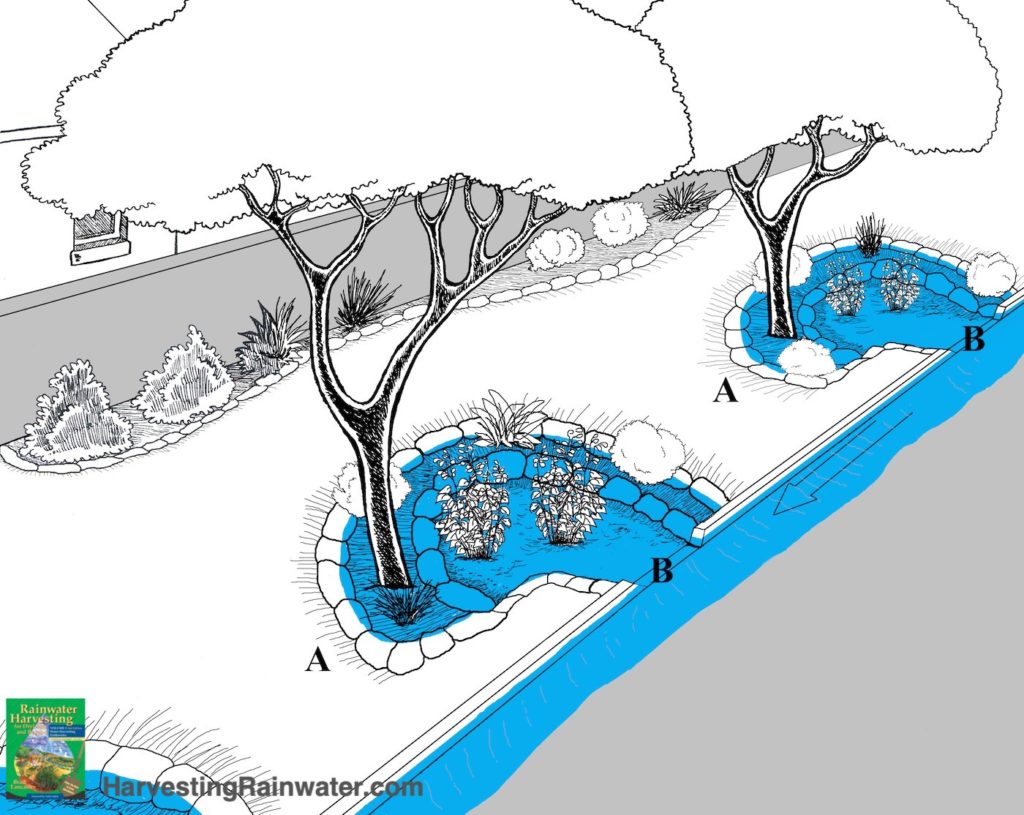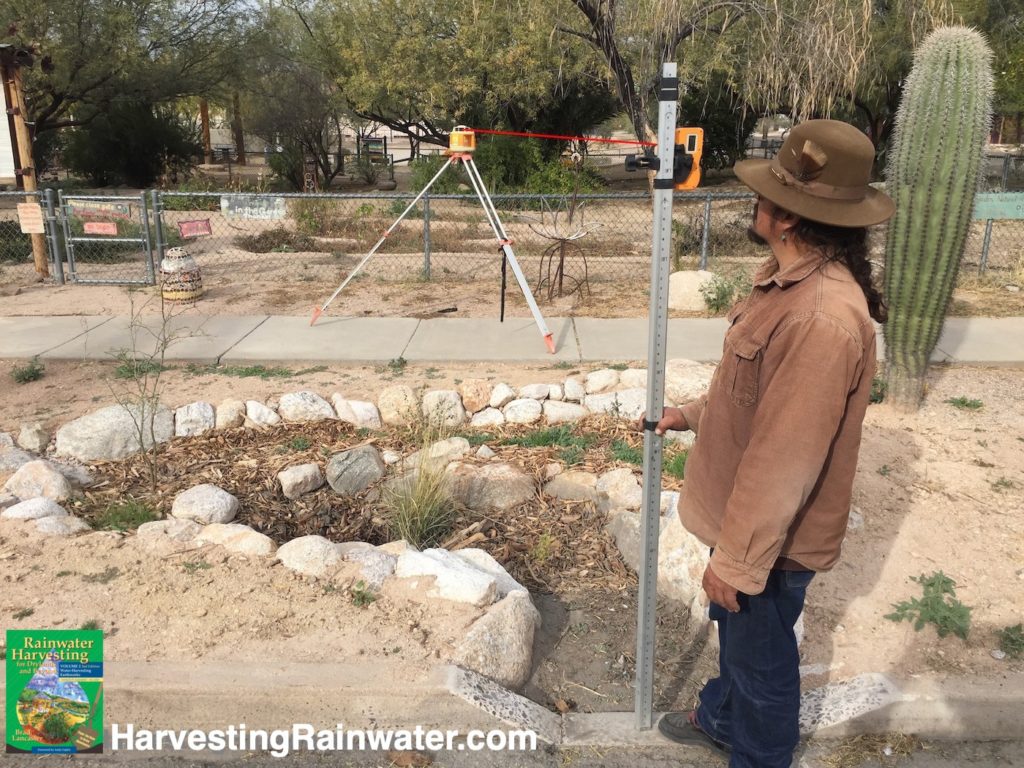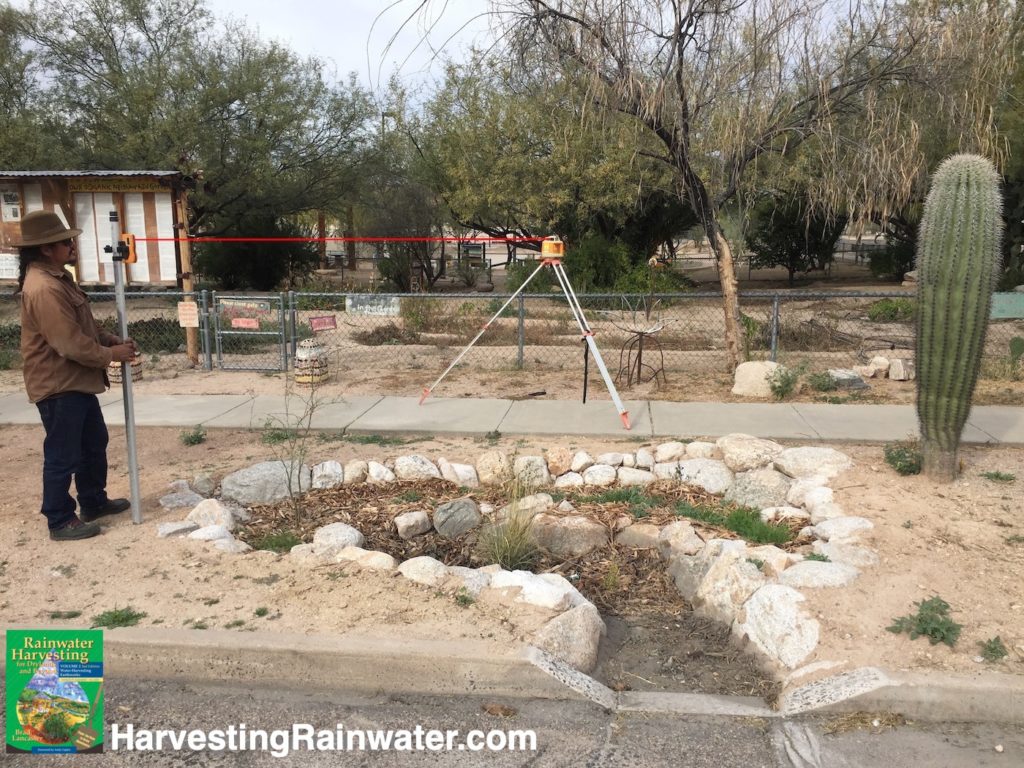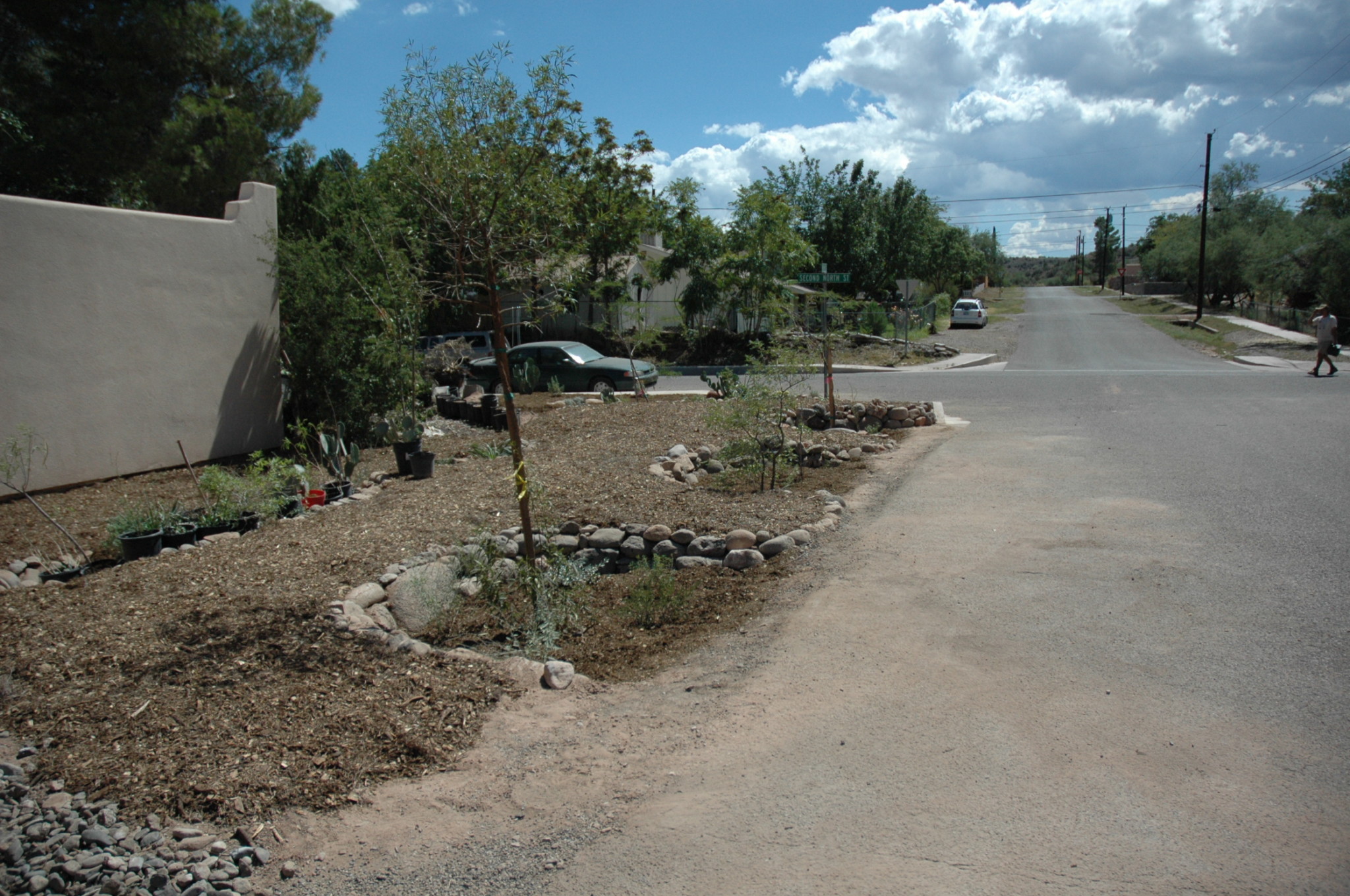Backwater or Eddy Basins
These runoff-harvesting basins are largely self-maintaining, thus they are typically my favorite—especially for do-it-yourselfers…

As an eddy basin fills with water, the water gradually and calmly backs up to the basin’s inflow point, and surplus water continues flowing down the pavement-stabilized street-curb gutter. When done right there are no erosion problems. These basins are ideal for mulched bottoms—do NOT put rock in an eddy basin’s level bottom as it will impede the rapid infiltration you desire. Mulch may float in basins, but for the most part will not leave; instead more will be gained— if inlets are at upstream side of basins. Incoming water transports leaf drop from the street into basins.
Regenerate mulch as needed with leaf drop and cut-up prunings from the plants growing in the basin. The rate of decomposition of the biomass in the basins will be quicker than non-basin areas due to the increased water inputs, which leads to a nice balance. I’ve found that by the time plants are ready for another pruning, the basins are ready for another application of mulch from cut-up prunings.
Key Elevation Relationships for Backwater or Eddy Basins
The upper edge of the farthest-downstream section of the basin (A) must be higher (ideally at least 4 inches [10 cm] higher) than the basin’s curb-cut, or curb-core, inlet (B)(fig. 1). If the upper edge of this downstream section of the basin (A) is lower than the inlet (B), the basin will act as a flow-through basin, not a backwater basin, as water will overflow at the downstream end (taking mulch with it) and, in this context, erode the earthen walkway. Thus, steeper streets will have shorter eddy basins (parallel with the street), while more-gradually sloping streets can have longer eddy basins.

For other ways of measuring elevation relationships see figure 1.6 and appendix 1 in “Rainwater Harvesting for Drylands and Beyond, Volume 2, 2nd Edition.”
Photo: Brad Lancaster

Note: These elevations must first be taken when laying out the basin’s perimeter and length to ensure all will be correct once built.
Photo: Brad Lancaster
See here for additional key elevation relationships for backwater or eddy basins.

Before the work, road runoff would flow up against and flood the house. After the work, the dirt dug from the street-side basins created a raised walkway that acts as a berm ensuring no basin water or street runoff can flow up against the house.
Before the work, there was no walkway; now there is a wonderful path wide enough for two people to walk side by side, separated by the trees from cars and street. Now the trees have grown to shade both walkway and street.
Photo taken by Carol Luhman just after the work was completed in 2007.
For info on curb cuts and curb cores that enable street runoff to enter the basin, visit this section.
For more info on needed slope at curb-cut inlet, plus elevation relationships within the basin, see here.
For video of hybrid eddy basin with water flow see here

Volume 2
For the most-complete additional information, step-by-step directions, and examples… buy, read, and share these award-winning books (from which this information was sourced—especially chapter 8 of Volume 2):
